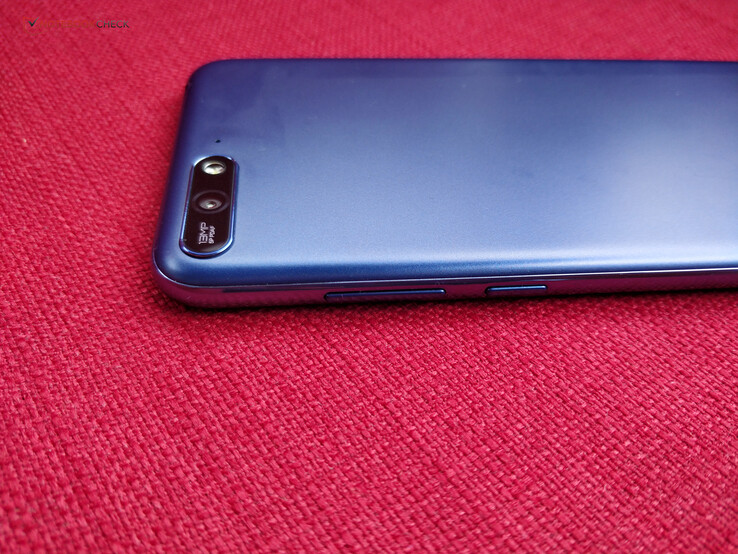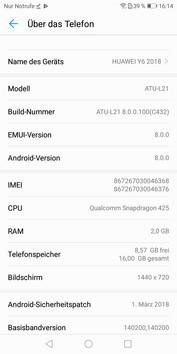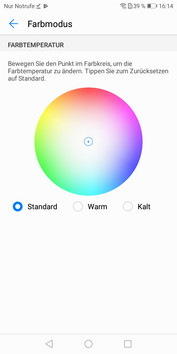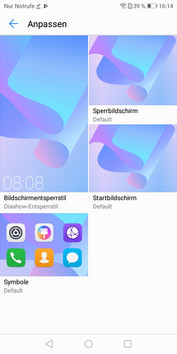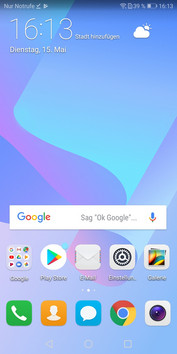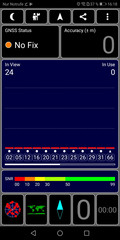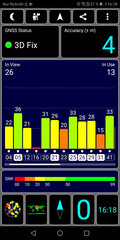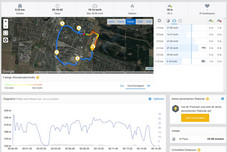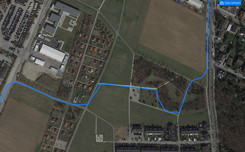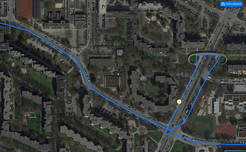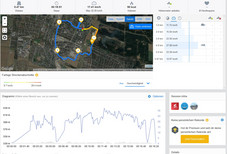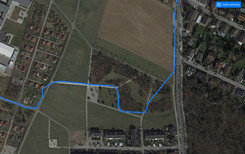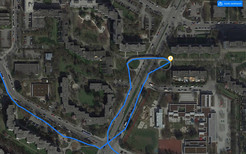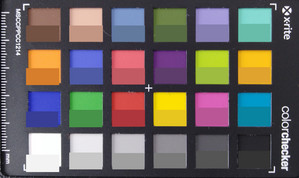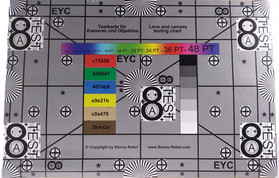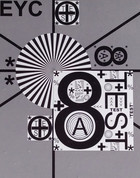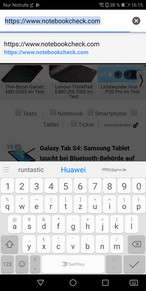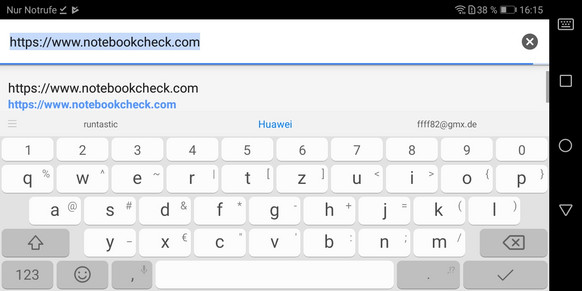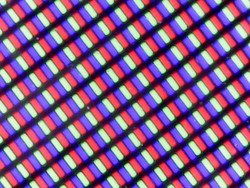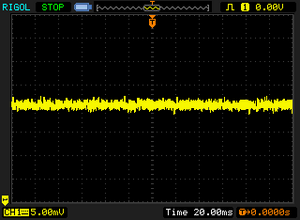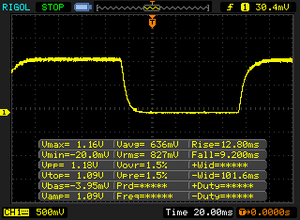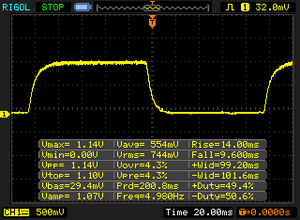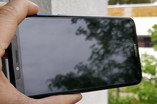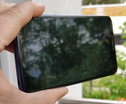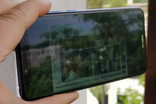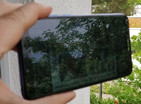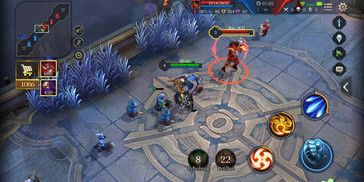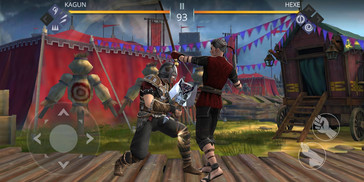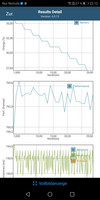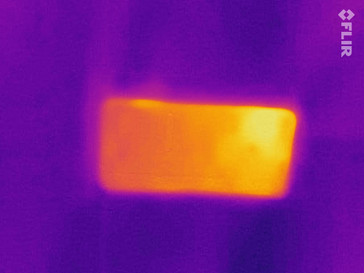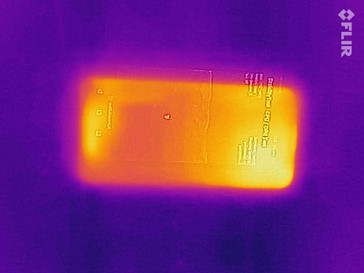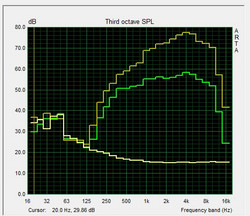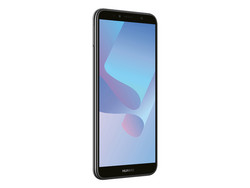Huawei Y6 2018 Smartphone Review
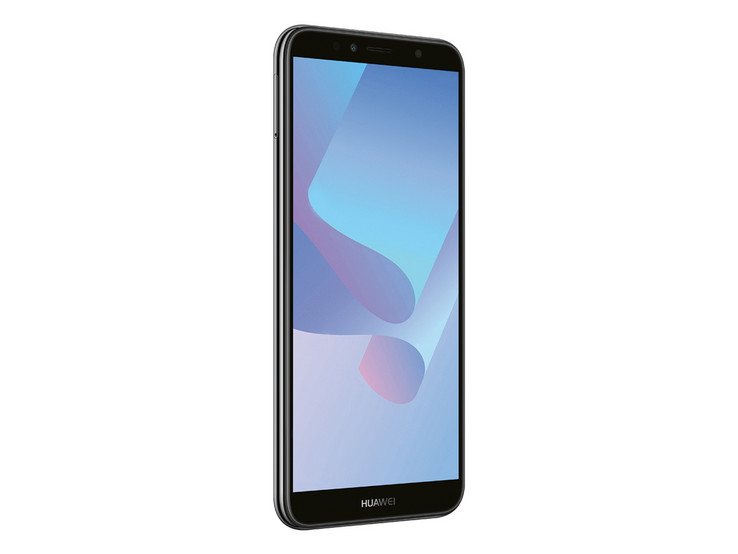
Didn’t Huawei want to get out of the cheap smartphone market? Last year, the margins on affordable devices were considered too low, but the success of the Y Series seems to have convinced Huawei to release another budget smartphone. So, here we have the Huawei Y6 2018 in for review. While last year’s Y6 2017 had plenty of power at an affordable price, its camera quality was, unfortunately, less convincing. This year’s model introduces a fresh new design, and a 2:1 aspect ratio, frequently referred to as 18:9. The Y6 2018 costs €150 (~$175), which is slightly cheaper than last year’s model. At this price, Huawei is looking for a larger piece of the budget smartphone market.
Huawei faces stiff competition from other manufacturers for market share though. We will be comparing the Y6 2018 against the cheaper Nokia 2, the more expensive BQ Aquaris VS and the equally priced Motorola Moto G5s.
Case
Broadly, the Y6 2018 reflects Huawei’s design traditions. However, Huawei has opted for a new case that incorporates narrower display bezels and helps make the Y6 2018 look more modern than its predecessor. While the back is made from plastic, the case frame is made from metal. The removable back of last year’s model has gone, with Huawei moving the SIM slot from beneath the back case to the left-hand side of the frame. The display does distort when pressed hard, but only marginally so. Equally, while we could twist our review unit it did not creak or make cracking sounds when we did so. Huawei factory-fits a screen protector that protects the display, but it is difficult to remove and makes the display feel cheaper because of it.
The Y6 2018 is currently available in black, blue or gold. Our review unit is blue and looks stylish. The frame catches the light, while the back is matte, the texture of which resists fingerprints well. Weighing 150 g (~5.3 oz), the Y6 2018 is a light smartphone that weighs just as much as its predecessor. Likewise, the device is thin at 7.8 mm (~0.3 in) thick; although this means that the rear camera module protrudes by around 0.5 mm.
Connectivity
The Y6 2018 has 16 GB of internal storage and 2 GB RAM. In comparison, the Nokia 2 has half the volume of internal storage and RAM while the Moto G5s has 32 GB storage and 3 GB RAM. Overall, the Y6 2018 is suitably equipped for a €149 (~$174) device released in 2018. The Y6 2018 supports microSD cards up to 256 GB too. Cards can only be formatted as external storage, so apps cannot be stored on a microSD.
Our review unit is the Dual-SIM variant. This supports two SIMs and a microSD simultaneously rather than a compromise between Dual-SIM functionality or microSD expansion as is the case with some smartphones.
The Y6 2018 has a micro-USB port that supports USB OTG. Bluetooth 4.2 and Wi-Fi Direct is the only other connectivity worth mentioning though as everything else is rather underwhelming.
Software
The Y6 2018 ships with Android 8.0 Oreo, on top of which Huawei installs EMUI 8.0. Our review unit came with Android security patch 1st March 2018, which was 2 ½ months old at the time of testing. EMUI is laid out slightly differently than stock Android; fortunately, there is a shallow learning curve. There are many configuration options, a drawback of which being that Huawei preinstalls various additional software that takes up precious internal storage. Our review unit had just 10 GB of internal storage left for user apps and files. Some of the preinstalled apps and games can be safely deleted and reinstalled from the Google Play Store when needed.
Huawei installs some useful tools, such as a Theme and Tips apps.
Communication & GPS
The Y6 2018 supports 802.11 b/g/n standards. In practical terms, this means that the device can only connect to 2.4 GHz networks and not 5 GHz ones. In comparison, the Moto G5s can connect to 5 GHz networks, with the more expensive Aquaris VS even supporting the faster 802.11 ac standard. While we would have liked 5 GHz support, the degree of Wi-Fi connectivity that the Y6 2018 does have is adequate for a sub €150 (~$175) device. Our review unit clearly performed worse than our comparison devices in our Wi-Fi tests with our reference Linksys EA 8500 router. By contrast, the Y6 2018 outperformed its predecessor.
Likewise, our review unit supports more LTE bands than its predecessor. The Y6 2018 is compatible with the four main UMTS bands. This is something upon which Huawei has improved, with last year’s model lacking support for LTE Band 5, the 850 MHz band used in North and Latin America. Despite these generational improvements, the Y6 2018 may still be difficult to use abroad as not all bands are supported. We had no LTE reception problems on Vodafone in Germany during our tests though. The Y6 2018 supports VoLTE too.
| Networking | |
| iperf3 transmit AX12 | |
| BQ Aquaris VS | |
| Motorola Moto G5s | |
| Nokia 2 | |
| Huawei Y6 2018 | |
| Huawei Y6 2017 | |
| iperf3 receive AX12 | |
| BQ Aquaris VS | |
| Motorola Moto G5s | |
| Nokia 2 | |
| Huawei Y6 2018 | |
| Huawei Y6 2017 | |
The GPS module could not locate us indoors but quickly manages to locate us outside up to an accuracy of four metres (~13 ft). There is no onboard compass, so we could not use Google Maps directional view. We found map placement to be reasonable despite this limitation though, even inside buildings.
We took the Y6 2018 on a mountain bike ride along with a Garmin Edge 500 and compared the GPS data from the Y6 2018 against that from the Garmin, a professional navigation system. Our review unit placed us reasonably precisely, albeit rather complicatedly over a bridge and poorly through wooded areas. Overall, there is a clear difference between the accuracy of both devices. However, the Y6 2018 does a good job for its price.
Telephone Function & Call Quality
Huawei installs its EMUI phone app, which looks and feels like Google’s default phone app. The app opens to a list of your recent calls, under which sits a keypad. The phone app is arranged by tabs that sit at the top of the screen, which include tabs for contacts and favorites. The phone app has a dedicated settings menu too, in which you can configure things such as call blocking.
The Y6 2018 has decent call quality. The earpiece sounds loud at no cost to clarity, with voices reproduced clearly during calls. It is worth noting that during calls we heard a faint background noise. The microphone is sensitive, which is both a good and bad thing. On the one hand, the microphone picks up quiet voices well, but it also can be overwhelmed by loud voices. Talking over speakerphone works well too, with voices sounding clear and undistorted. However, the microphone is not sensitive enough to capture soft voices yet breaks off with loud voices.
Cameras
The cameras have not changed much in comparison to the Y6 2017, even though the rear camera housing looks different. The Y6 2018 still has a 13 MP rear camera with a monochrome flash and a 5 MP front-facing camera. These are solid specs for a smartphone in this price range.
The front-facing camera takes photos that are well lit in dark areas and overexposed in bright ones, partly thanks to its LED flash. The 5 MP camera only has fixed focus, which requires objects being at a certain distance away from the camera before coming into focus. Front-facing shots lack detail, but this is to be expected from such a cheap smartphone.
Huawei has positioned the main camera near the top right-hand corner of the rear case, which makes it easy for a finger to stray into shot when taking a photo. The rear camera takes images in which objects appear sharp, but colors are rather cool. Low light performance is poor, with photos coming out blurry and underexposed. The camera has a panoramic mode too, but this mode overexposes the sky and has significantly fewer details than higher quality smartphone cameras.
The rear-facing camera can record videos at up to 1080p. As with photos, the colors are cool, while the autofocus jumps each time it refocuses. We found that the exposure adapts well to changing lighting conditions. Overall, the level of detail in videos is adequate for a cheap smartphone.
We also examined camera performance in our lab under controlled lighting conditions for a more thorough test. The results from taking photos of our test chart and the X-Rite color control panel came out reasonably sharp, albeit colors look a bit patchy. Equally, the Y6 2018 reproduced text against a colored background sharply but struggled with yellow backgrounds. Both images are almost uniformly sharp too, with only minor losses in sharpness at the edges of each test image.
The color reproduction is acceptable, but it is a bit too bright in our opinion.
Accessories & Warranty
The Y6 2018 comes with a charger, a USB cable and a SIM tool. These accessories cannot be purchased on Huawei’s online store, nor are any additional accessories available either.
The Y6 2018 comes with twenty-four months warranty. Please see our Guarantees, Return policies and Warranties FAQ for country-specific information.
Input Devices & Operation
Huawei includes SwiftKey as the default keyboard. The app has many input options and can be personalized with different themes. You are not stuck using SwiftKey though as it can be replaced with other keyboard apps such as those downloadable from the Google Play Store.
The touchscreen worked reliably during our testing and is sensitive throughout, even up to the edges. The preinstalled screen protector feels smooth to the touch and does not affect using the device. It is difficult to remove though.
The Y6 2018 uses capacitive navigation buttons with the power button and the volume rocker being the only physical buttons on the device. They both have a good pressure point and are easy to find when holding the device.
There is no fingerprint scanner, but you could use Face Unlock as an alternative to a traditional PIN or pattern. Face Unlock takes a photo of your face and unlocks your device when it recognizes a face matching the one that has been recorded. Google requires you to set a PIN or pattern in case the device fails to recognize your face, but Face Unlock is not very secure. We managed to unlock our review unit by just holding up another smartphone with a picture of a corresponding face.
Display
The Y6 2018 has a 5.7-inch 1,440 x 720 display with a 2:1 aspect ratio. This resolution is as expected for a device at this price, with the Moto G5s being our only comparison device to have a higher resolution display. The Y6 2018 has a brighter display compared to its predecessor, but this is still darker than our other comparison devices. We measured an average brightness of 460 cd/m² using X-Rite i1Pro 2 which should be bright enough in most cases.
Brightness distribution is okay at 88%, but we do notice differences in brightness across large areas of a single color.
| |||||||||||||||||||||||||
Brightness Distribution: 88 %
Center on Battery: 444 cd/m²
Contrast: 1208:1 (Black: 0.4 cd/m²)
ΔE ColorChecker Calman: 5.8 | ∀{0.5-29.43 Ø4.78}
calibrated: 4.42
ΔE Greyscale Calman: 5 | ∀{0.09-98 Ø5}
93.9% sRGB (Calman 2D)
Gamma: 2.6
CCT: 7709 K
| Huawei Y6 2018 IPS, 1440x720, 5.7" | Nokia 2 IPS, 1280x720, 5" | Motorola Moto G5s IPS, 1920x1080, 5.2" | BQ Aquaris VS IPS, 1280x720, 5.2" | Huawei Y6 2017 IPS, 1280x720, 5" | |
|---|---|---|---|---|---|
| Screen | -8% | 6% | -1% | 37% | |
| Brightness middle (cd/m²) | 483 | 527 9% | 490 1% | 535 11% | 438 -9% |
| Brightness (cd/m²) | 460 | 503 9% | 502 9% | 544 18% | 432 -6% |
| Brightness Distribution (%) | 88 | 91 3% | 92 5% | 88 0% | 90 2% |
| Black Level * (cd/m²) | 0.4 | 0.68 -70% | 0.43 -8% | 0.61 -53% | 0.13 67% |
| Contrast (:1) | 1208 | 775 -36% | 1140 -6% | 877 -27% | 3369 179% |
| Colorchecker dE 2000 * | 5.8 | 5.3 9% | 5.7 2% | 5.3 9% | 4.8 17% |
| Colorchecker dE 2000 max. * | 12.6 | 9.2 27% | 7.8 38% | 11.1 12% | 11.4 10% |
| Colorchecker dE 2000 calibrated * | 4.42 | ||||
| Greyscale dE 2000 * | 5 | 5.8 -16% | 4.7 6% | 4 20% | 3.2 36% |
| Gamma | 2.6 85% | 2.12 104% | 2.4 92% | 1.95 113% | 2.23 99% |
| CCT | 7709 84% | 7894 82% | 7526 86% | 6800 96% | 7090 92% |
* ... smaller is better
Screen Flickering / PWM (Pulse-Width Modulation)
| Screen flickering / PWM not detected | |||
In comparison: 53 % of all tested devices do not use PWM to dim the display. If PWM was detected, an average of 8111 (minimum: 5 - maximum: 343500) Hz was measured. | |||
The Y6 2018 has a good contrast ratio and black value of 1,208:1 and 0.4 cd/m² respectively. Our review unit cannot match its predecessor’s black value though, which we measured at 0.13 cd/m². The display has strong colors and does not use PWM for brightness regulation.
We also used a spectrophotometer and CalMAN software for a more precise measurement of color representation. We noticed a clear blue tint to the display at default settings. White balance can either be manually adjusted or set to one of three presets. The default “cold” preset produces a heavier blue tint and sets colors even further from the reference value. Equally, setting the display to “warm” mode results in higher than desirable color values and creates a green tint to grays. We were able to manually adjust the white balance so that whites are displayed accurately. Light grays look too dark though. We have included a screenshot of the optimal settings for reference. Colors are also more accurate than using the standard settings.
Display Response Times
| ↔ Response Time Black to White | ||
|---|---|---|
| 22 ms ... rise ↗ and fall ↘ combined | ↗ 12.8 ms rise | |
| ↘ 9.2 ms fall | ||
| The screen shows good response rates in our tests, but may be too slow for competitive gamers. In comparison, all tested devices range from 0.1 (minimum) to 240 (maximum) ms. » 47 % of all devices are better. This means that the measured response time is similar to the average of all tested devices (20.2 ms). | ||
| ↔ Response Time 50% Grey to 80% Grey | ||
| 23.6 ms ... rise ↗ and fall ↘ combined | ↗ 14 ms rise | |
| ↘ 9.6 ms fall | ||
| The screen shows good response rates in our tests, but may be too slow for competitive gamers. In comparison, all tested devices range from 0.165 (minimum) to 636 (maximum) ms. » 33 % of all devices are better. This means that the measured response time is better than the average of all tested devices (31.6 ms). | ||
The Y6 2018 is easily usable outdoors at maximum brightness except for on bright days. There should be no problems using the device in the shade even on the brightest of days. The brightness sensor reacts quickly and precisely to different lighting.
While screen content is recognizable from any viewing angle, there are noticeable brightness shifts at acute angles.
Performance
The Y6 2018 is powered by a Qualcomm Snapdragon 425 processor, a budget quad-core CPU that clocks up to 1,400 MHz. While the Y6 2018 is generally faster than its MediaTek powered predecessor, the difference is marginal in daily use. Overall, our review unit delivers class-leading performance for its price and can even compete with devices that are more expensive.
The Y6 2018 often stutters in everyday use, particularly if a complex app is open in the background or you are switching between apps.
Graphics are handled by the Qualcomm Adreno 308. The Y6 2018 lacks support for newer OpenGL version, so benchmarks like GFXBench Manhattan 3.1/4.0 and 3DMark Sling Shot Extreme will not work. This affects games too as some graphical settings are just not there. Worse still, the Y6 2018 performed worse than its predecessor in benchmarks. This makes the Y6 2017 a better choice for gamers than its successor.
| AnTuTu v6 - Total Score (sort by value) | |
| Huawei Y6 2018 | |
| Nokia 2 | |
| Motorola Moto G5s | |
| BQ Aquaris VS | |
| Huawei Y6 2017 | |
| Average Qualcomm Snapdragon 425 (MSM8917) (29054 - 39106, n=17) | |
| AnTuTu v7 - Total Score (sort by value) | |
| Huawei Y6 2018 | |
| BQ Aquaris VS | |
| Average Qualcomm Snapdragon 425 (MSM8917) (32557 - 46710, n=10) | |
| PCMark for Android | |
| Work performance score (sort by value) | |
| Huawei Y6 2018 | |
| Nokia 2 | |
| Motorola Moto G5s | |
| BQ Aquaris VS | |
| Huawei Y6 2017 | |
| Average Qualcomm Snapdragon 425 (MSM8917) (3681 - 5253, n=17) | |
| Work 2.0 performance score (sort by value) | |
| Huawei Y6 2018 | |
| Nokia 2 | |
| Motorola Moto G5s | |
| BQ Aquaris VS | |
| Huawei Y6 2017 | |
| Average Qualcomm Snapdragon 425 (MSM8917) (2829 - 3831, n=18) | |
The Y6 2018 sits among the upper midfield of comparable devices within our Internet benchmarks. This performance is at the same level as last year’s model. HTML 5 websites like Google Interland load quickly but there are visible stutters while navigating throughout the site.
| JetStream 1.1 - Total Score | |
| Motorola Moto G5s (Chrome 62) | |
| Huawei Y6 2018 (Chrome 66) | |
| BQ Aquaris VS (Chrome 65) | |
| Huawei Y6 2017 (Chrome 60) | |
| Average Qualcomm Snapdragon 425 (MSM8917) (15.5 - 18.7, n=16) | |
| Nokia 2 (Chrome 65) | |
| Octane V2 - Total Score | |
| Average of class Smartphone (2228 - 121337, n=201, last 2 years) | |
| BQ Aquaris VS (Chrome 65) | |
| Huawei Y6 2017 (Chrome 60) | |
| Motorola Moto G5s (Chrome 62) | |
| Average Qualcomm Snapdragon 425 (MSM8917) (2411 - 3374, n=17) | |
| Huawei Y6 2018 (Chrome 66) | |
| Nokia 2 (Chrome 65) | |
| Mozilla Kraken 1.1 - Total | |
| Nokia 2 (Chrome 65) | |
| Huawei Y6 2018 (Chrome 66) | |
| BQ Aquaris VS (Chrome 65) | |
| Average Qualcomm Snapdragon 425 (MSM8917) (10742 - 16192, n=17) | |
| Motorola Moto G5s (Chrome 62) | |
| Huawei Y6 2017 (Chrome 60) | |
| Average of class Smartphone (257 - 28190, n=156, last 2 years) | |
| WebXPRT 2015 - Overall | |
| Average Qualcomm Snapdragon 425 (MSM8917) (62 - 79, n=8) | |
| Huawei Y6 2018 (Chrome 66) | |
| Huawei Y6 2017 (Chrome 60) | |
| Motorola Moto G5s (Chrome 62) | |
* ... smaller is better
The internal memory is sufficiently fast, but it may be worth noting that read speeds are significantly higher than write speeds. Our review unit accesses our reference Toshiba Exceria Pro M501 microSD card relatively quickly too.
| Huawei Y6 2018 | Nokia 2 | Motorola Moto G5s | BQ Aquaris VS | Huawei Y6 2017 | Average 16 GB eMMC Flash | Average of class Smartphone | |
|---|---|---|---|---|---|---|---|
| AndroBench 3-5 | -24% | 72% | 28% | -4% | -32% | 1935% | |
| Sequential Read 256KB (MB/s) | 254.3 | 131.1 -48% | 259 2% | 254.4 0% | 202.6 -20% | 164.5 ? -35% | 2216 ? 771% |
| Sequential Write 256KB (MB/s) | 65.6 | 50.8 -23% | 77.5 18% | 185.9 183% | 66.9 2% | 43 ? -34% | 1837 ? 2700% |
| Random Read 4KB (MB/s) | 38.8 | 17.44 -55% | 40.6 5% | 47.2 22% | 25.93 -33% | 21.7 ? -44% | 294 ? 658% |
| Random Write 4KB (MB/s) | 9 | 8.1 -10% | 46.2 413% | 6.4 -29% | 20.54 128% | 8.08 ? -10% | 334 ? 3611% |
| Sequential Read 256KB SDCard (MB/s) | 84.9 ? | 81.9 ? -4% | 84.1 ? -1% | 83.3 ? -2% | 48.4 -43% | 59.1 ? -30% | |
| Sequential Write 256KB SDCard (MB/s) | 64 ? | 61.2 ? -4% | 62.3 ? -3% | 59.4 ? -7% | 26.4 -59% | 39.8 ? -38% |
Games
The Y6 2018 can comfortably play games at 30 FPS; gaming at 60 FPS is the stuff of fantasy. We noticed considerable stuttering while playing Arena of Valor even at low settings. These stutters are represented by the peaks and troughs in the chart below. In short, we would recommend looking for another device if you are a hardcore smartphone gamer.
Unconnected to these in-game stutters is the touchscreen and positional sensor, which worked reliably throughout our tests.
| Shadow Fight 3 | |||
| Settings | Value | ||
| high | 39 fps | ||
| minimal | 41.5 fps | ||
| Arena of Valor | |||
| Settings | Value | ||
| min | 31 fps | ||
| high HD | 30 fps | ||
Emissions
Temperature
The Y6 2018 gets hottest at the top, reaching 35.8 °C (96.44 °F) on the front under load. Our review unit reached 33 °C (91.4 °F) in the corresponding area on the rear. While these temperatures are noticeably warm, they are not uncomfortable or dangerous.
As the results from GFXBench demonstrate, the Snapdragon 425 maintains peak performance even under prolonged load.
(+) The maximum temperature on the upper side is 35.8 °C / 96 F, compared to the average of 35.2 °C / 95 F, ranging from 21.9 to 247 °C for the class Smartphone.
(+) The bottom heats up to a maximum of 33 °C / 91 F, compared to the average of 34 °C / 93 F
(+) In idle usage, the average temperature for the upper side is 28.4 °C / 83 F, compared to the device average of 32.9 °C / 91 F.
Speakers
The Y6 2018 has a single mono speaker that is on the underside of the device. While a smartphone speaker will not be passable for music enthusiasts, the speaker is good enough for short-term listening. The speaker has better lows and midrange than its predecessor and does a better job at muting the highest of high tones too. This results in a good sound that is relatively warm and balanced. The speaker tends to sound tinny and unpleasant at maximum volume, which we measured at 84 dB(A). While this is loud, it is 2% quieter than Huawei’s claim of 88 dB(A).
There is a 3.5 mm jack at the top of the device, which outputs sound cleanly to headphones or external speakers. The Y6 2018 comes with Histen sound effects, which allows you to equalize sound and configure settings to best suit your listening device. Our review unit transmits sound via Bluetooth without issue too.
Huawei Y6 2018 audio analysis
(+) | speakers can play relatively loud (84.2 dB)
Bass 100 - 315 Hz
(-) | nearly no bass - on average 25.3% lower than median
(±) | linearity of bass is average (11% delta to prev. frequency)
Mids 400 - 2000 Hz
(±) | higher mids - on average 5.3% higher than median
(+) | mids are linear (5.5% delta to prev. frequency)
Highs 2 - 16 kHz
(±) | higher highs - on average 10.8% higher than median
(+) | highs are linear (2.1% delta to prev. frequency)
Overall 100 - 16.000 Hz
(±) | linearity of overall sound is average (27.4% difference to median)
Compared to same class
» 71% of all tested devices in this class were better, 5% similar, 24% worse
» The best had a delta of 11%, average was 35%, worst was 134%
Compared to all devices tested
» 83% of all tested devices were better, 4% similar, 13% worse
» The best had a delta of 4%, average was 24%, worst was 134%
Huawei Y6 2017 audio analysis
(+) | speakers can play relatively loud (83.4 dB)
Bass 100 - 315 Hz
(-) | nearly no bass - on average 29.6% lower than median
(±) | linearity of bass is average (12.3% delta to prev. frequency)
Mids 400 - 2000 Hz
(±) | reduced mids - on average 5.8% lower than median
(+) | mids are linear (6.8% delta to prev. frequency)
Highs 2 - 16 kHz
(±) | higher highs - on average 7.2% higher than median
(+) | highs are linear (4.4% delta to prev. frequency)
Overall 100 - 16.000 Hz
(±) | linearity of overall sound is average (26.6% difference to median)
Compared to same class
» 68% of all tested devices in this class were better, 5% similar, 27% worse
» The best had a delta of 11%, average was 35%, worst was 134%
Compared to all devices tested
» 81% of all tested devices were better, 4% similar, 15% worse
» The best had a delta of 4%, average was 24%, worst was 134%
Battery Life
Power Consumption
The Y6 2018 is not very economical in terms of power consumption. Our review unit consumes 6.8 W under load, which is around 7% higher than average consumption under load for a Qualcomm Snapdragon 425 device. In terms of our comparison devices, the Y6 2018 consumes slightly less than the Moto G5s consumes but is significantly more consumptive under load than both the BQ Aquaris VS and the Nokia 2. Strikingly, the Y6 2018 uses around twice the energy at idle than an average of our comparison devices.
| Off / Standby | |
| Idle | |
| Load |
|
Key:
min: | |
| Huawei Y6 2018 3000 mAh | Nokia 2 4100 mAh | Motorola Moto G5s 3000 mAh | BQ Aquaris VS 3100 mAh | Average Qualcomm Snapdragon 425 (MSM8917) | Average of class Smartphone | |
|---|---|---|---|---|---|---|
| Power Consumption | 46% | 33% | 41% | 21% | 8% | |
| Idle Minimum * (Watt) | 1.7 | 0.55 68% | 0.67 61% | 0.61 64% | 1.113 ? 35% | 0.848 ? 50% |
| Idle Average * (Watt) | 2.5 | 1.02 59% | 1.4 44% | 1.7 32% | 2.19 ? 12% | 1.434 ? 43% |
| Idle Maximum * (Watt) | 3.2 | 1.09 66% | 1.52 52% | 1.71 47% | 2.55 ? 20% | 1.618 ? 49% |
| Load Average * (Watt) | 5.2 | 4.48 14% | 4.56 12% | 3.02 42% | 4.32 ? 17% | 7.01 ? -35% |
| Load Maximum * (Watt) | 6.8 | 5.32 22% | 7.05 -4% | 5.31 22% | 5.5 ? 19% | 11.3 ? -66% |
* ... smaller is better
Battery Life
Accordingly, the Y6 2018 has underwhelming battery life. The Y6 2017 lasts 8% longer than its successor in our load battery test and has 15% longer idle runtimes. Comparatively, the Y6 2018 significantly outlasts the Moto G5s. All three devices have 3,000 mAh batteries. The Y6 2018 often rigorously manages apps that consume energy in the background and has two energy-saving modes to preserve battery life. The screen resolution can even be reduced to save energy. The Y6 2018 scored ten hours and forty-three minutes in our Internet browsing battery test with no energy-saving features activated.
Charging the Y6 2018 with the included charger takes over two hours.
| Huawei Y6 2018 3000 mAh | Nokia 2 4100 mAh | Motorola Moto G5s 3000 mAh | BQ Aquaris VS 3100 mAh | Huawei Y6 2017 3000 mAh | |
|---|---|---|---|---|---|
| Battery runtime | 31% | -14% | 7% | 5% | |
| Reader / Idle (h) | 22.2 | 20.6 -7% | 25.4 14% | ||
| H.264 (h) | 11.7 | 10.8 -8% | 11.6 -1% | ||
| WiFi v1.3 (h) | 10.7 | 14 31% | 8.6 -20% | 11.4 7% | 10.9 2% |
| Load (h) | 4.7 | 3.8 -19% | 5 6% |
Pros
Cons
Verdict
The Huawei Y6 2018 is a good package at an affordable price. While you could spend more money on other devices, they will not necessarily have more features than that which the Y6 2018 offers. The Y6 2018 provides good performance for the money. The display is relatively bright and has a good contrast ratio while the GPS is accurate enough to use Google Maps. The cameras take passable photos too. Equally, the speakers sound good and the device stays mostly cool under load.
Naturally, there are some drawbacks with a sub €150 (~$175) device: there is no fingerprint scanner or compass, power consumption is high and there are occasional stutters that disrupt the user experience.
The Huawei Y6 2018 is a good choice for those looking to save some money. Do not expect miracles though.
While the price point limits the praise that we can give, the Y6 2018 still receives a recommendation from us. Simply, the Huawei Y6 2018 offers good performance and value for the money.
Huawei Y6 2018
- 05/17/2018 v6 (old)
Florian Wimmer




